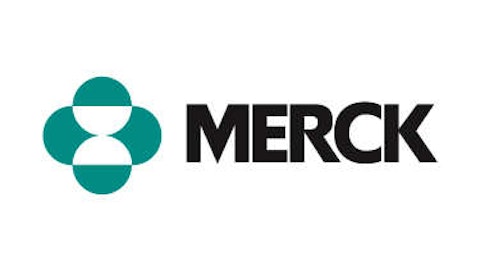Great news, America! Dennis Rodman met North Korea’s Communist dictator, Kim Jong-un and said, “He’s a really good guy.” Well, that’s a relief. Now we can all forget about the rampant human-rights violations, the mass famine, and the fact that North Korea’s supreme military body just announced that it wants to launch a pre-emptive nuclear strike against the U.S. and turn D.C. into “a sea of fire.”
You read that right. Instead of backing down because of new sanctions, North Korea has retaliated by issuing more threats against the U.S. and South Korea. While this news may appear to be coming at exactly the wrong time, specifically because of sequestration and defense cuts, there are a few things you should know.

Second, if push comes to shove, America could squash North Korea like a bug. America spends a lot of money on defense. We have a state-of-the-art Missile Defense Agency, or MDA, which includes the following names:
Northrop Grumman Corporation (NYSE:NOC), the prime contractor on the MDA’s Joint National Integration Center, a simulating and war gaming center that provides answers for America’s missile defense capabilities.
The Boeing Company (NYSE:BA)‘s Ground-based Interceptors — our first line of defense against missiles.
Raytheon Company (NYSE:RTN)‘s SM-3, a defense weapon used to destroy incoming ballistic missiles.
Lockheed Martin Corporation (NYSE:LMT)‘s Aegis Missile Defense System, the primary sea-based component of the missile defense system.
Because of sequestration, defense is facing significant cuts. But here are some important points to consider.
On March 1, President Obama signed across-the-board cuts into law. Somewhat shockingly, the markets, and the aforementioned defense giants in particular, responded with a yawn.
I think there are three main reasons for that type of reaction:
America is getting used to Washington’s shenanigans.
The cuts haven’t been felt yet.
People still expect a resolution.
But here’s the thing: It’s almost guaranteed that a resolution will include cuts. America can’t keep spending as if the bill will never come due. It’s irresponsible, and it will end up hurting us more than Kim Jong-un’s tantrums.
Most lawmakers know that, so if a budget resolution is ever reached, the Department of Defense will probably still face painful cuts. Nevertheless, the escalating threats coming from North Korea bring into sharp focus why a strong missile defense network is imperative, and why the MDA and its key players aren’t going anywhere. Conversely, budget constraints also point to the need for smarter, modern, and more affordable defense systems. Enter the unmanned aerial vehicles, or UAVs — otherwise known as drones.
Over the past few years, drones have become the fastest-growing segment in the Air Force. Although they are by no means inexpensive, the likes of the MQ-1 Predator and MQ-9 Reaper built by General Atomics are still cheaper than any of the manned fighters they compare with. More importantly, UAVs are part of the future of modern warfare.




